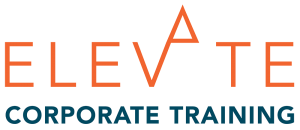They say the only certainties in life are death and taxes. It’s safe to say you can add change and stress to that list.
Whether it’s a setback at work, bouncing back from failing, or just dealing with the day-to-day workplace stress inherent in most jobs, it can be crippling if you don’t deal with change and stress effectively.
One recent study revealed that 94 percent of workers said they suffer from stress in the workplace. A third said that stress level is “high” or “unsustainably high.” Most all reported that that workplace stress bled over into their personal lives as well.
What Is Resilience?
The ability to be resilient – to bounce back from setbacks – and throw off stress is critical at work. It’s critical for a healthy life as well. Stress contributes to a range of health problems from minor ailments to heart disease. It can cause your cells to age more quickly. Resiliency can help manage that stress and reduce your risks.
Fortunately, resilience building is a skill that can be learned just like other skills. Research shows that resiliency can be built by taking proactive steps.
How To Build Resilience
Resilience building has five main steps:
- Fail Mindfully
- Gain Perspective
- Improvise
- Lean on Your Network
- Confront Challenges Head On
Fail Mindfully
Everybody fails at some point. When it happens, too many of us will hide it away. We may feel embarrassed or take it as a personal shortcoming. Stop!
The fact is that we learn from our failures. We learn analytical skills. We learn humility. We learn resiliency.
Great achievements that happen the first time are more likely the result of serendipity. Most great accomplishments are the result of pushing past momentary setbacks by viewing them merely as necessary steps to success.
“I have not failed,” Thomas Edison once said. “I’ve just found 10,000 ways that won’t work.”
Embrace the lessons learned. By acknowledging setbacks, you build resilience. It’s too easy to let the fear of failure stifle innovation in an effort to avoid risk.
Gain Perspective
When dealing with difficult situations, it’s important to keep things in perspective in order to gain perspective.
“Don’t sweat the small stuff,” Richard Carlson, Ph. D. famously said. “And it’s all small stuff.”
By looking at things with a long view, short-term setbacks become less important. Ask yourself if anybody will remember this moment a decade from now. Practicing this mindfulness on a regular basis can help train your brain to think differently. It builds resiliency when you understand even setback do not define you.
This is an opportunity for self-discovery. Sometimes it takes facing difficult situations to grow. Challenging experiences are opportunities to learn who you really are. It’s a chance to find inspiration and test yourself.
Improvise
Resiliency requires you to think differently. You might need to think quickly and creatively or find different ways of approaching situations. By forcing yourself to think differently, you are learning there is always another way to look at things.
We can feel intense stress when we think we don’t know how to move forward. If you think there’s only one right answer and you don’t know it, can feel overwhelming. Rarely, though, is there a single answer to any business problem.
You are building resilience by understanding there isn’t just one right answer. There are multiple ways to solve almost every problem.
Lean On Your Network
You may feel that you’re the only one that can come up with a solution. You may feel that it’s your personal responsibility and you don’t want to let other people down. While that responsibility can be an admirable quality, there’s actually a name for this condition: The Superman Complex. It’s an unhealthy belief that others don’t have the capacity to do the job.
Remember, you’re not alone! Lean on your network. Share the burden. The best answers may come from someone other than you.
“Don’t let your mind bully your body into believing it must carry the burden of its worries.” – Astrid Alauda
When you do fail, sharing these failures makes you stronger. Showing your vulnerability to others can help you connect in a more meaningful – and deeper – way.
Giving credit to those that helped you along the way strengthens that connection. You are building resilience by remembering there’s a team around you that can help.
Confront Challenges Head On
You learn how to build resilience when you are challenged. By confronting these challenges head on you are taking positive action to deal with them.
Often, it’s the stress of anticipation of tackling a job or problem that is the greatest threat of all. This is why when you’re feeling overwhelmed with the amount of work that needs to be done, making a list and crossing off a couple of easy tasks can reduce that feeling.
Address challenges with clear communication and decisive action.
“Being challenged in life is inevitable, being defeated is optional.” – Roger Crawford
The Greatest Weapon
Stress can be exhaustive. Feeling overwhelmed can be debilitating. Both can, however, be managed. You first have to learn the keys to recognising what is resilience. Then, you must take positive steps to resilience building. This can help relieve stress, make you more productive, and literally improve your quality of life.
These steps are not just something you have to come to by yourself either. They can all be learned in certain forms of leadership training and mindfullness training. And they will make a huge difference to how you learn to cope at work and in your everyday life.
“The greatest weapon against stress is our ability to choose one thought over another.” – William James

